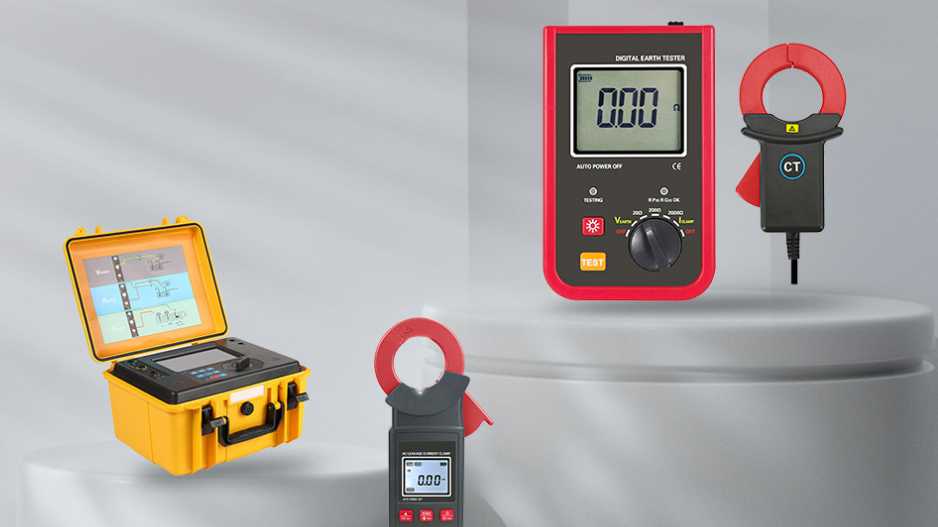7 Commonly Used Electronics Test Equipment You Should Know
The purpose of electronics test equipment is to measure various electrical parameters, including current, voltage, cycle, frequency, electric power, power factor, resistance, inductance, capacitance, and more. By measuring these parameters, electricians can assess the technical performance and operational status of electrical equipment within a circuit. This allows them to make necessary adjustments and take appropriate actions to ensure the circuit operates normally and equipment operates safely. Here are seven commonly used electronics test equipment you should be familiar with.
Electronics test equipment comprises a wide array of instruments and tools essential for verifying, diagnosing, and analyzing electronic circuits, components, and systems. These tools are pivotal in ensuring the functionality, reliability, and compliance of electronic devices across various industries.
Importance of Electronics Test Equipment:
1. Quality Assurance: Ensures electronic devices meet design specifications and industry standards before market release.
2. Troubleshooting and Diagnosis: Helps identify faults, malfunctions, or defects in circuits, aiding in repairs and maintenance.
3. Compliance Testing: Verifies that electronic devices comply with safety, regulatory, and industry standards.
4. Development and Prototyping: Facilitates design validation, prototype testing, and verification of electronic circuits during development.
5. Optimizing Performance: Allows for optimization of circuit performance, ensuring efficiency, reliability, and optimal functionality.
6. Research and Innovation: Aids in research and innovation by providing tools to test new technologies and components.
Multimeter
The multimeter is an electrical instrument that every electrical practitioner must be proficient in. It is a necessary test tool for electricians, electronic equipment and instrument maintenance and production.
Its basic function is to measure current (AC/DC), voltage (AC/DC) and resistance. Multimeters also perform other functions such as measuring levels (in decibels), power, capacitance, inductance, and key parameters of transistors. Due to their versatility, they are often referred to as multimeters.
There are various types of multimeters available in different shapes, but they share the same basic structure and usage method. Based on their internal structure, there are two commonly used types: analog (pointer) and digital.
An analog multimeter features a mechanical head as its core component, with the measured value indicated by the pointer on the dial.
On the other hand, a digital multimeter displays the measured value directly in numerical form on an LCD screen, often with additional voice prompt functions.
In terms of shape, multimeters come in desktop, clamp, handheld, pocket, and other variations.
Clamp Ammeter
A clamp ammeter is a portable instrument designed specifically for measuring the current in AC circuits. Its primary feature is the ability to measure large currents without disconnecting the circuit under test. This makes it highly convenient for use during operations.
When using a conventional multimeter to measure circuit current, it's necessary to disconnect the circuit first and then connect the multimeter for measurement. However, in practical scenarios, disconnecting the circuit can lead to power outages, which is inconvenient, especially in settings like factories, schools, and institutions where uninterrupted power supply is crucial. In such situations, a clamp ammeter proves invaluable.
The clamp ammeter typically consists of an ammeter and a through-type current transformer. The core of the through-type current transformer is designed as a movable opening shaped like a clamp, hence the name "clamp ammeter". Currently, common clamp ammeters are categorized into pointer type and digital type based on their display mode. Functionally, they include AC clamp ammeters, multi-purpose clamp ammeters, harmonic digital clamp meters, leakage current clamp meters, AC/DC clamp ammeters, and more.
Insulation Resistance Meter
An insulation resistance meter, commonly known as a megger, is a specialized test instrument used to assess the insulation condition of electrical equipment, household appliances, or electrical lines, both to ground and between phase wires. As the unit of resistance measured by this instrument is typically megohms (MΩ), it is often referred to as a megohmmeter.
The insulation resistance meter measures the insulation resistance of electrical equipment, household appliances, or electrical lines to determine the quality of insulation and identify any leakage.
While some multimeters can measure resistance at the megohm level, their provided voltage is usually too low to accurately assess the insulation of high-voltage PCBs in electrical equipment. For high-voltage electrical equipment, aside from using an insulation resistance meter for insulation resistance testing, a withstand voltage test is also necessary to evaluate insulation performance.
Insulation resistance meters can generally be categorized into two types based on their working and display methods: hand-operated insulation resistance meters and digital insulation resistance meters.
Oscilloscope
The oscilloscope is primarily utilized for measuring the waveform, frequency, period, phase, and other relevant parameters of electrical signals. Its basic structure comprises a display circuit, Y-axis amplifier circuit, X-axis amplifier circuit, scanning synchronization circuit, and power supply circuit. It serves as an essential testing tool for the maintenance and production of electronic equipment and instruments.
An oscilloscope can be likened to a voltmeter with a graphical display. While an ordinary voltmeter provides measurement readings of signal voltage through a pointer or digital display, oscilloscopes offer a different approach. They feature a screen capable of graphically displaying changes in signal voltage over time, known as waveforms.
Oscilloscopes are classified into analog oscilloscopes and digital oscilloscopes based on the type of signals they handle.




